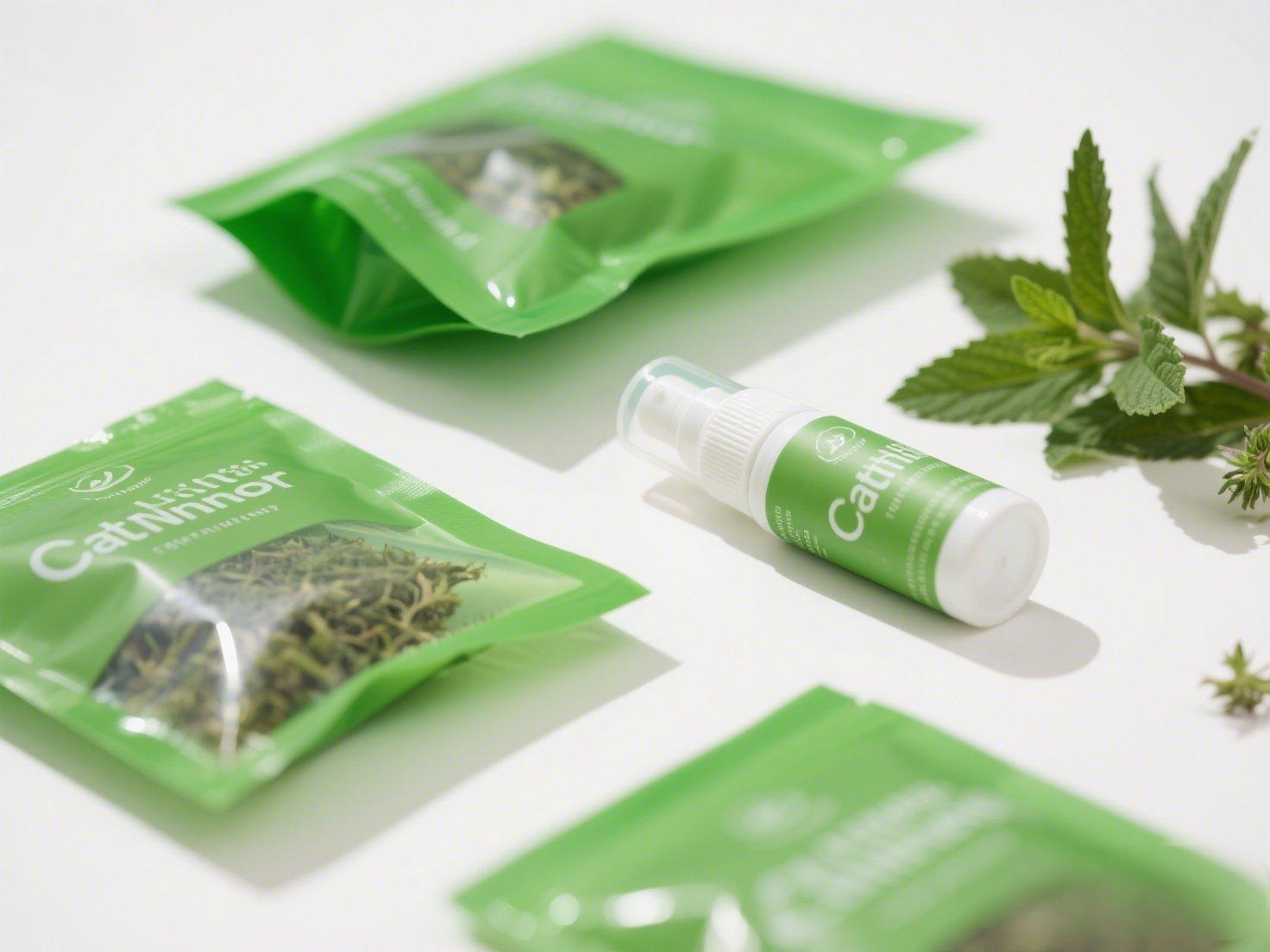If you live with a cat, you’ve probably seen the wild, unpredictable, and downright entertaining effects of catnip. One minute, your feline is lounging like a regal little monarch—the next, they’re zooming around the house like they’ve just chugged an espresso. But what is this magical herb, and could it have any effect on humans? Let’s break it down.

What Is Catnip?
Catnip (Nepeta cataria) is a leafy green herb from the mint family. It grows naturally in Europe, Asia, and the Middle East, and if you’ve ever seen it in the wild, you might mistake it for regular mint—until your cat starts losing its mind over it. The plant produces tiny, fragrant leaves and small white or purple flowers, but the real magic lies in its chemical makeup.
Why Do Cats Go Crazy for It?
The secret sauce in catnip is a compound called nepetalactone, which is found in the plant’s leaves and stems. When cats sniff it, the chemical binds to receptors in their noses, sending signals to the brain that trigger a euphoric response. Some cats roll around in bliss, others become hyperactive, and a few just zone out like they’ve had one too many catnip martinis.
Interestingly, not all cats react to catnip—about 30% are completely unaffected, and scientists believe this is due to genetics. So if your cat couldn’t care less about the stuff, don’t worry—they’re not broken, just selectively unimpressed.
Is Catnip Safe for Cats?
Absolutely. Catnip is non-toxic and non-addictive, so there’s no need to worry if your cat goes on a nip-fueled bender. The effects usually wear off in 10-15 minutes, after which your cat will either crash into a nap or act like nothing ever happened.
Does Catnip Affect Humans?
Here’s where things get interesting. While catnip sends felines into a frenzy, it doesn’t have the same psychedelic effect on humans. Our brains just don’t respond to nepetalactone the same way.
However, catnip has been used by humans for centuries—just not for getting high. Historically, it’s been brewed into tea to help with relaxation, digestion, and even as a mild sleep aid. Some people in the 1960s even tried smoking it (spoiler: it didn’t work like weed).
Catnip Tea: A Human-Friendly Use
If you’re curious about catnip’s calming effects, you can try it as a tea. Here’s how:
Some people swear by it for anxiety relief or insomnia, though scientific evidence is limited. Still, if chamomile isn’t cutting it, catnip tea might be worth a shot.
Other Uses for Catnip
Beyond entertaining your cat and possibly helping you sleep, catnip has another surprising superpower: it repels bugs. Mosquitoes, flies, and even cockroaches hate the stuff, making it a natural alternative to chemical repellents.
Just a word of caution—if you plant catnip in your garden, be prepared for every neighborhood cat to treat your yard like their personal party spot.
Final Verdict: Fun for Cats, Mildly Useful for Humans
So, does catnip work on people? Not in the same way it does for cats. While it won’t make you hallucinate or start doing parkour off the furniture, it might help you relax. And if nothing else, watching your cat lose its mind over a dried leaf is entertainment enough.
Now, if you’ll excuse me, I have to go film my cat’s latest catnip-induced antics for TikTok.
























